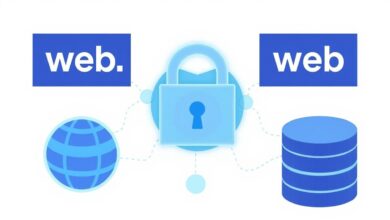Mastering Security: Understanding User Roles and the Principle of Least Privilege

In today’s complex digital landscape, safeguarding sensitive information is paramount. A cornerstone of robust cybersecurity strategy involves meticulously managing who can access what within your systems. This brings us to two critical concepts: User Roles and the Principle of Least Privilege (PoLP). Understanding and implementing these correctly is no longer just good practice; it’s essential for protecting your organization from internal and external threats.
The Principle of Least Privilege is a fundamental security concept dictating that any user, application, or system component should only have the absolute minimum permissions necessary to perform its specific, authorized functions. Think of it as giving out keys: you wouldn’t give a master key to someone who only needs access to a single room. Similarly, in the digital realm, access rights should be strictly limited to only what is required for a defined task or job role.
What Are User Roles?
User roles are predefined sets of permissions and access rights assigned to specific categories of users within an IT system. Instead of assigning permissions individually to each user (a potentially complex and error-prone process), administrators group permissions into roles based on job functions, responsibilities, or authority levels. Common examples include:
- Administrator: Highest level of access, capable of managing system settings, user accounts, and security configurations.
- Standard User: Access required for day-to-day tasks, typically unable to install software or change system settings.
- Guest: Very limited access, often temporary, for users outside the organization or with minimal interaction needs.
- Editor/Contributor: Specific roles in content management systems, allowing content creation or modification but not site-wide changes.
Defining clear user roles simplifies access management and forms the foundation for implementing security policies effectively.
[Hint: Insert image/video illustrating different user role icons or a hierarchy chart here]Diving Deeper: The Principle of Least Privilege (PoLP)
As introduced, the Principle of Least Privilege ensures that entities operate with minimal necessary privileges. This isn’t about mistrust; it’s about minimizing potential damage. If an account with excessive permissions is compromised (through malware, phishing, or insider threat), the attacker gains those excessive permissions, potentially leading to widespread system compromise, data breaches, or operational disruption. By enforcing PoLP, you significantly limit the ‘blast radius’ of any single security incident.
Why is PoLP So Critical?
Implementing the Principle of Least Privilege offers substantial security benefits:
- Reduced Attack Surface: Fewer privileges mean fewer potential avenues for attackers to exploit. If a standard user account is compromised, the attacker’s capabilities are restricted compared to compromising an admin account.
- Limited Malware Propagation: Malware often requires elevated permissions to spread effectively or cause significant damage (like ransomware encrypting network drives). PoLP restricts malware’s ability to execute harmful actions.
- Improved Operational Stability: Restricting permissions reduces the likelihood of users accidentally making configuration changes or deleting critical data that could disrupt operations.
- Enhanced Compliance: Many regulatory frameworks (like GDPR, HIPAA, PCI DSS) mandate strict access controls. PoLP is a core component of meeting these compliance requirements. NIST provides extensive guidelines emphasizing this principle.
- Simplified Auditing: Tracking user actions and permissions becomes more manageable when access is clearly defined and restricted based on roles and necessity.
How User Roles and PoLP Intersect
User Roles and the Principle of Least Privilege are intrinsically linked. User roles provide the mechanism *through which* PoLP is often implemented, particularly in a strategy known as Role-Based Access Control (RBAC).
Here’s how it works:
- Define Job Functions: Clearly outline the tasks and responsibilities associated with different jobs within the organization.
- Identify Necessary Permissions: For each job function, determine the absolute minimum system access and permissions required to perform those tasks.
- Create Roles: Group these minimum necessary permissions into specific User Roles.
- Assign Roles: Assign users to the appropriate role(s) based on their job function, ensuring they don’t receive permissions beyond what their role requires.
- Regular Review: Periodically review roles and user assignments to ensure permissions are still appropriate and align with PoLP as job functions evolve.
This structured approach ensures that access is granted based on genuine need, adhering strictly to the Principle of Least Privilege.
[Hint: Insert image/video showing a diagram of how roles are assigned permissions based on PoLP here]Implementing PoLP Effectively
Putting the Principle of Least Privilege into practice requires a systematic approach:
- Audit Existing Permissions: Start by understanding who has access to what right now. Identify overly permissive accounts.
- Default Deny Stance: Implement a policy where access is denied by default, and permissions are only granted explicitly when necessary.
- Just-in-Time (JIT) Access: For sensitive tasks requiring elevated privileges, consider JIT solutions that grant temporary access on demand, which expires after use.
- Segregation of Duties: Ensure no single user has excessive control over critical processes; split responsibilities across different roles.
- Regular Audits & Reviews: Continuously monitor and review user permissions, especially after role changes or departures.
- Utilize Access Management Tools: Leverage Identity and Access Management (IAM) and Privileged Access Management (PAM) solutions to automate and enforce policies.
For more insights on managing access, see our related post on best practices for identity management.
Conclusion
Understanding user roles and diligently applying the Principle of Least Privilege are fundamental pillars of modern cybersecurity. By defining roles clearly and ensuring access rights are strictly limited to only what is necessary, organizations can significantly reduce their vulnerability to attacks, limit the impact of breaches, prevent accidental errors, and maintain regulatory compliance. While implementation requires effort and ongoing maintenance, the enhanced security posture makes it an indispensable practice in protecting valuable digital assets.




